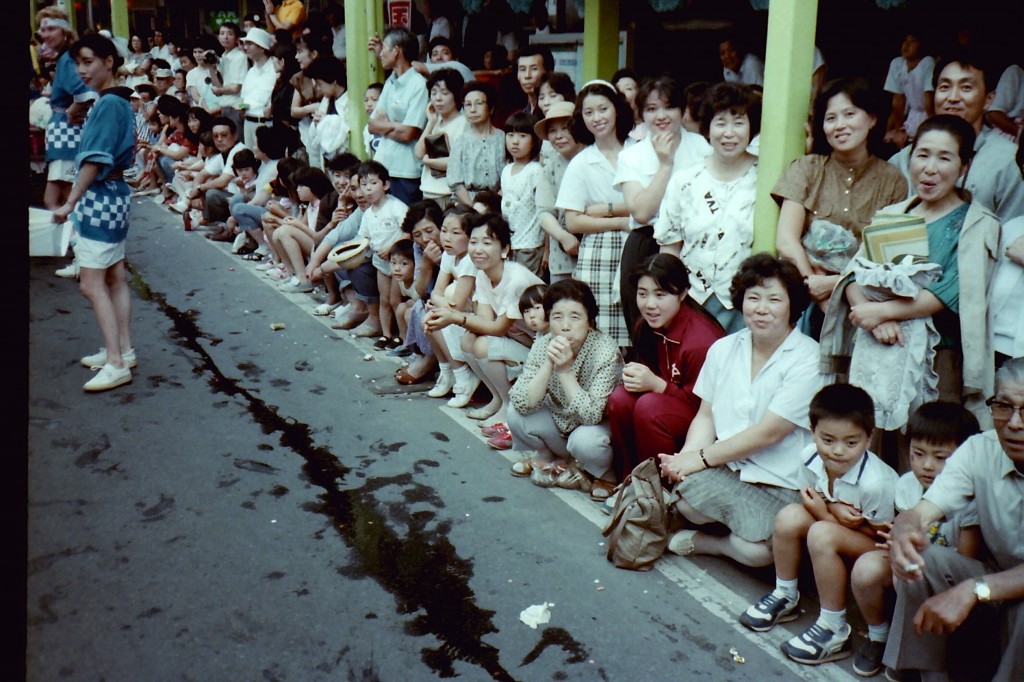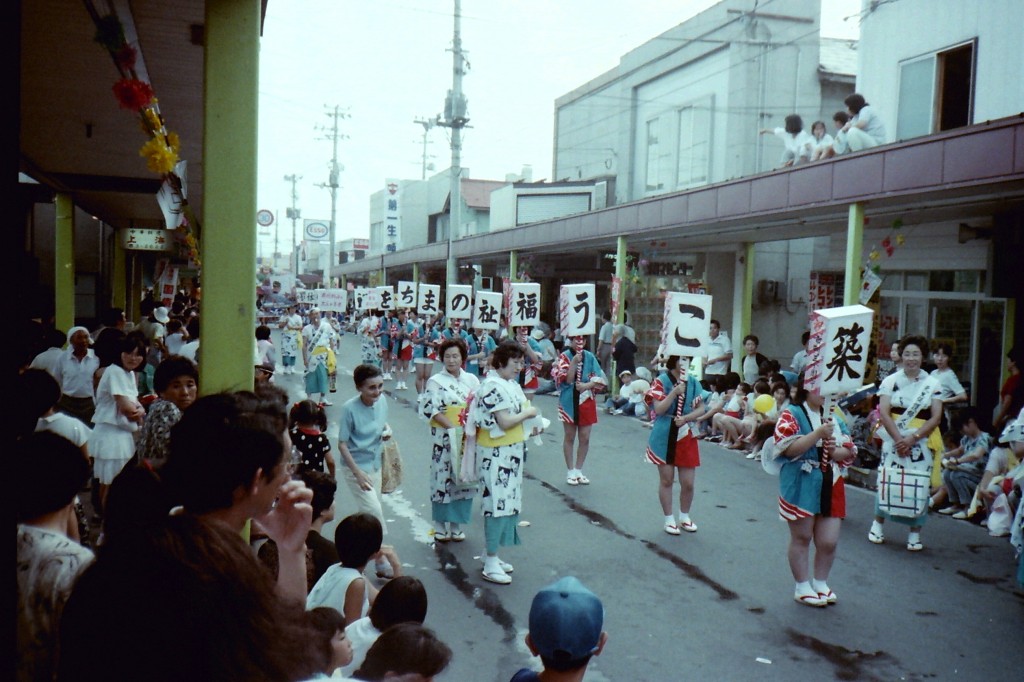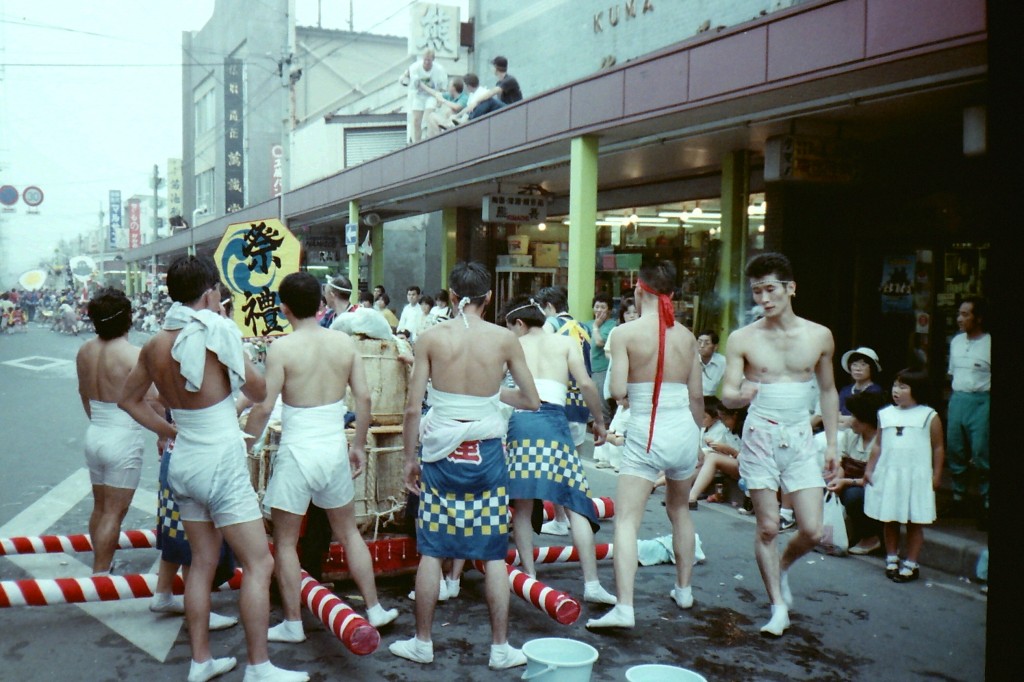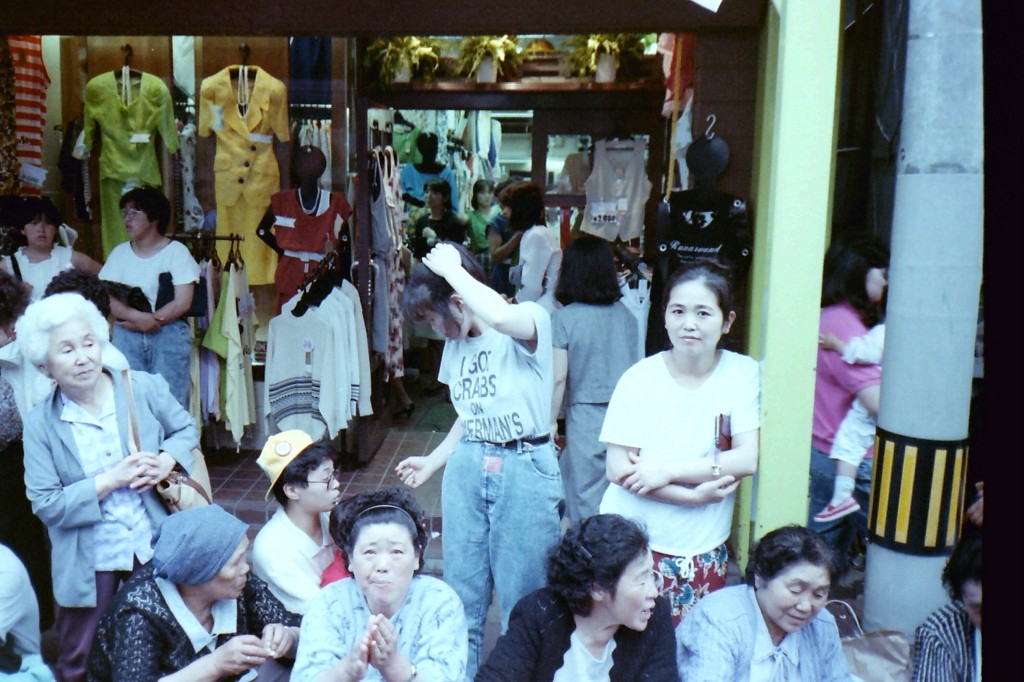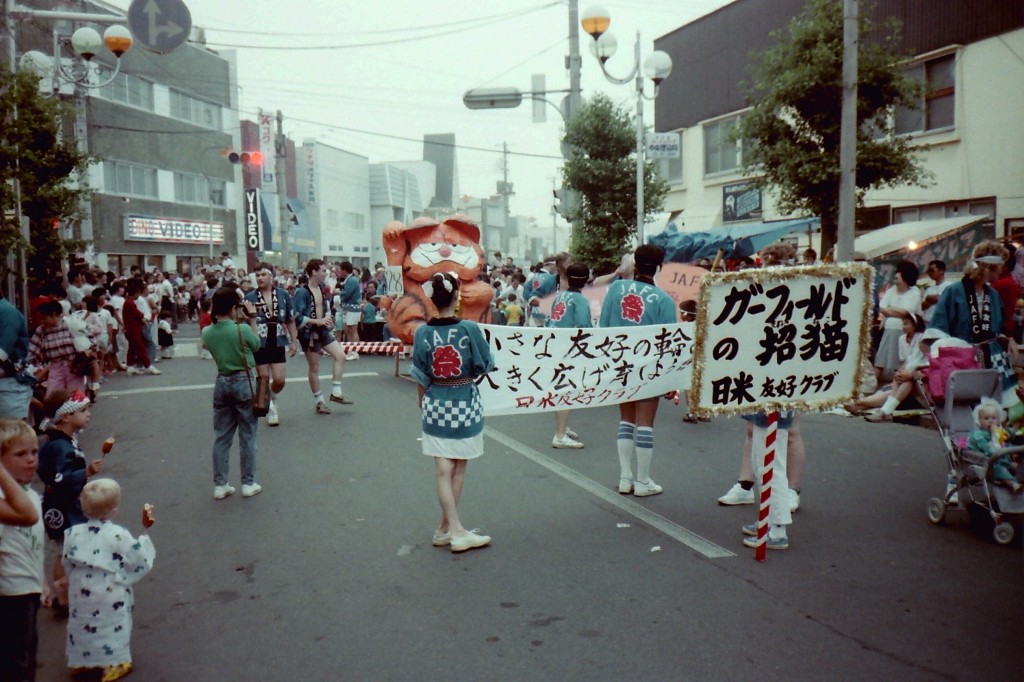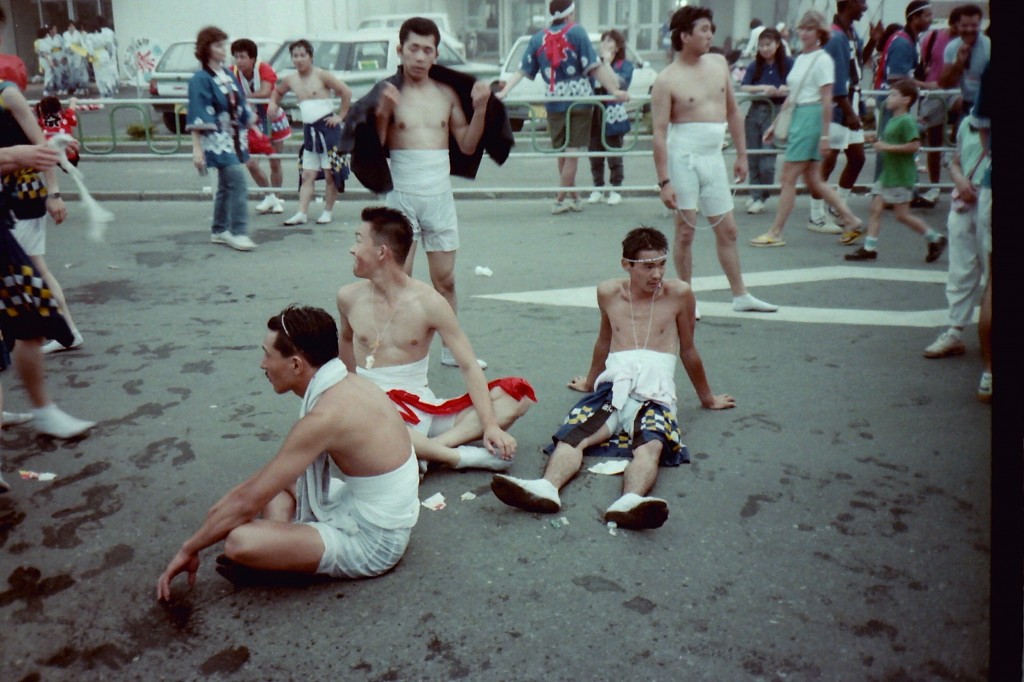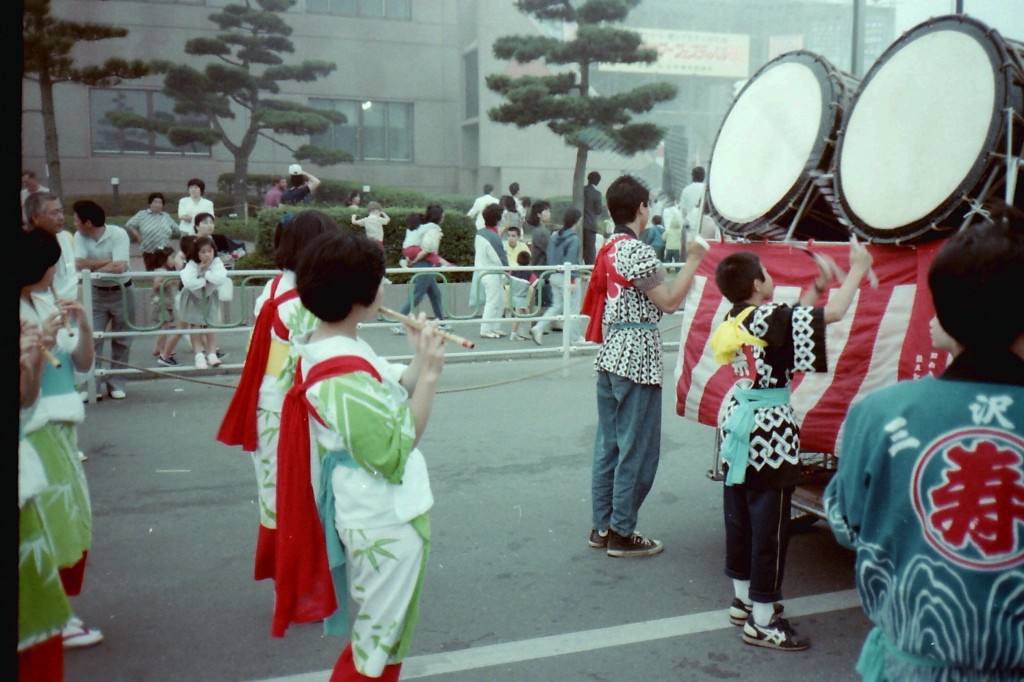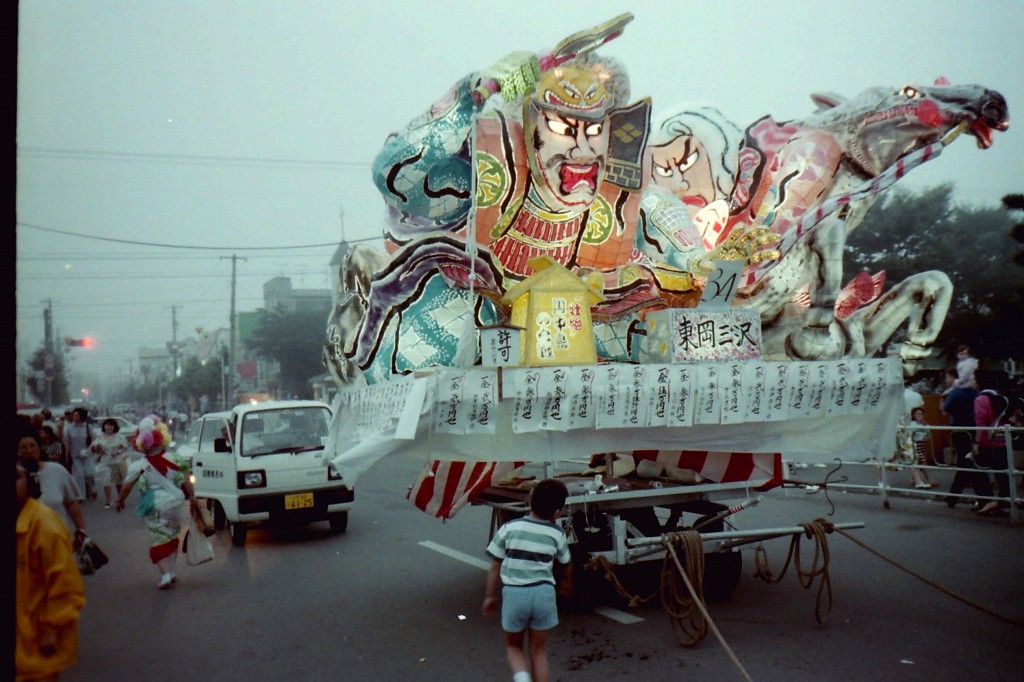This very, very nice lady was my housekeeper in Japan. She also kept house for some of my coworkers, and for only about $30, she scrubbed everything, shined shoes, stacked papers, vacuumed, and sometimes even cooked up a little miso soup with mussels. Her name, if memory serves me, was Miyako. All I can remember for sure is the “Mi” part, since I know her name began with the Hiragana symbol that looks like the number “2.” More often than not, Japanese girls’ names end with “ko,” so I’ve probably got it right.
Miyako seems really happy in this photo, but sometimes she wore even darker sunglasses on overcast days — to hide the bruises. You see, she was separated from her husband, living in a tiny place with her three kids, trying to scrape out a living, and her husband would still beat her periodically, and he would not grant her a divorce. In Japan, wives are the property of their husbands, and a woman cannot divorce her husband unless the man gives her permission. He could legally beat her to within an inch of her life, and no one could do a thing about it — legally. Miyako’s husband provided, on occastion, transportation for her, so he kept tabs on her that way. One time, he found out that some of us foreign devils had given her candy for Christmas or Valentine’s day or something, and he beat the sushi out of her. I knew something was wrong when she arrived wearing sunglasses and did not want to take gifts, and her husband was sitting in his car in my driveway. The good news, however, is that the barbarian finally granted Miyako a divorce, and with that went all his rights of ownership. The next time he hit her would land him in jail, but I’m afraid I had to leave Japan before I found out the rest of the story.
This happy-looking crowd was oblivious to the fate that was about to befall them. This was the resting spot I told you about earlier where, when we raised our Garfield mikoshi on high, my camera swung off my neck and sailed into the crowd, landing, I think, on someone’s knee and popping apart the camera body. I was able to continue snapping, but the smiles were gone after that.
Here’s a good view of Green Pole Street, which I mentioned in an earlier post.
How many little ciggies can you count in this picture? And I wonder how these young, macho men are doing health-wise some twenty-four years later?Â
It was so common to see misused English in Japan. For example, I knew a young woman who wore a cheeerleader’s jacket that said on the back, “Encounter Mutant,” and I bought a box of cookies that were labeled, “Homely Cookies.” Another of my favorites was the coffee creamer named “Creap,” and the isotonic drink I mentioned earlier called, “Pocari Sweat.” This girl, for certain, had not a clue about her shirt’s double entendre. But, in reality, we were only a few kilometers from the wharves.
Our quest is nearing an end, and Garfield, I presume, will be stored away for another day. The cute little girl in the kimono is visible in the stroller on the right, and don’t even ask me what the kids on the left are eating — it’s not state fair corn dogs; I’ll guarantee that.
These guys are, as we say in Oklahoma, flat worn out, they’ve been rode hard and put up wet. What was curious was, for all the time we were taking part in the parade, and for all the beer that was consumed, no one had to use the benjo (crude word for bathroom, meaning “convenient place,” also what we called the covered ditches that lined most of the roads and which conveyed raw sewage). It was so hot and everyone worked so hard that all liquid imbibed turned to sweat (but not Pocari Sweat).
The Mikoshi Parade is over, the the woman in the center is passing out the Pepsi. But the festivities are far from over, as the big, elaborate wheeled floats are coming!
Following are a few photos to give you a preview of bigger and better things to come. Some of the floats I will show you in subsequent posts are quite impressive.


